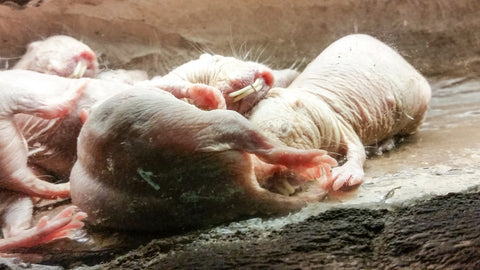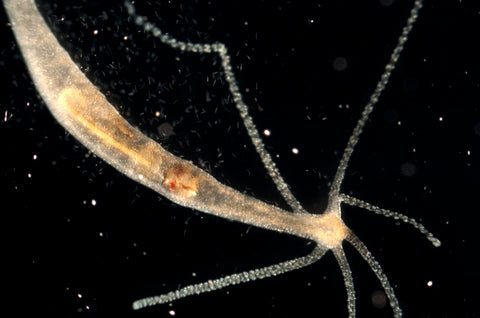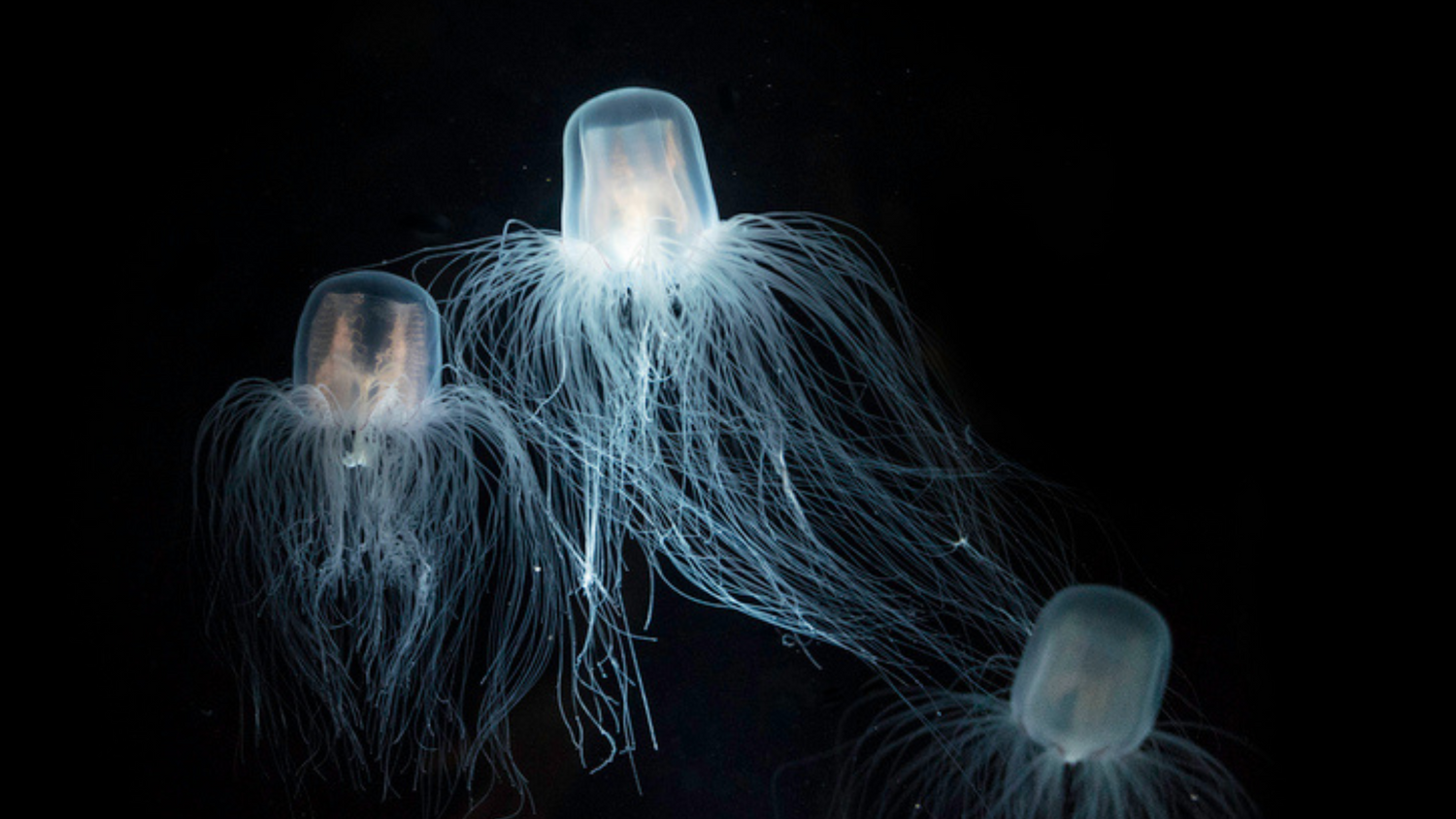Since ancient times, humans have been captivated by the elusive pursuit of immortality, yearning to unlock the secrets of eternal youth. But as science delves deeper into the mysteries of ageing, a tantalising question emerges: could the key to defying time itself be concealed within the very fabric of the natural world?
Join us on a journey as we unravel the enigma of immortality, exploring the latest research findings and gleaning wisdom from some of nature's most enduring inhabitants.
Do We Have to Age?
The process of ageing, also known as senescence, is a complex phenomenon that involves the gradual decline in biological functions and the ability to adapt to metabolic stress over time.
In humans and many other species, ageing is characterised by the accumulation of damage at the cellular and molecular levels, leading to a decline in physical and cognitive functions, and an increased susceptibility to diseases.
However, the notion that ageing is inevitable in life is not universally true across all living beings. In the natural world, there are species that exhibit negligible senescence, meaning they do not show the typical signs of ageing seen in humans.
These organisms do not experience a significant decline in their reproductive capabilities or an increased mortality rate with age.
While ageing is a natural part of life for many species, including humans, the study of organisms that defy the typical ageing process offers valuable insights that could lead to breakthroughs in extending health span, the period of life spent in good health, and potentially lifespan in humans (R).
Senescence and Negligible Senescence
🧬 Senescence refers to the process of biological ageing. It is characterised by the gradual deterioration of physiological functions and cellular mechanisms, which ultimately leads to decreased reproductive capabilities, increased vulnerability to diseases, and higher mortality rates.
In senescent organisms, various signs of ageing become evident, including changes in appearance (such as greying hair and wrinkles), decreased energy levels, slower healing processes, and declining cognitive abilities.
At the cellular level, senescence is marked by reduced cellular division, accumulation of damaged DNA, and impaired metabolic processes.
The causes of senescence are multifaceted and include genetic factors, environmental influences, and lifestyle choices. At the molecular level, factors such as telomere shortening, oxidative stress, and the accumulation of senescent cells contribute to the ageing process.
These changes result in the gradual decline of bodily functions and increase the risk of age-related diseases such as cancer, diabetes, and heart disease.
🧬 Negligible Senescence, on the other hand, describes a condition observed in certain species where the usual signs of ageing are not present or are significantly delayed.
Organisms exhibiting negligible senescence do not show a marked decline in their physiological functions, reproductive capabilities, or mortality rates as they age. Instead, they maintain their vitality, health, and risk of death at a more constant level throughout their lives.
Species demonstrating negligible senescence provide valuable insights into the biological mechanisms that can prevent or slow down the ageing process.
Studying these organisms helps researchers understand how ageing works and offers potential clues for developing interventions that could delay ageing or improve healthspan in humans.
Examples of organisms with negligible senescence include certain types of hydra, rats, jellyfish (like the Turritopsis dohrnii), lobsters, and some species of fish and clams. These species manage to avoid or significantly reduce the decline in cellular and physiological functions that typically accompany ageing in other organisms (R).
Why do Some Species Exhibit Exceptionally Long Lifespans?
In nature, there are creatures whose lifespans defy the human understanding of time and ageing, showcasing what seems to be near-immortal existence.
The exceptionally long lifespans observed in some species can be attributed to a variety of biological, environmental, and genetic factors. Here you will discover a few of these species and what makes them near-immortal (R).
Lobsters Age Differently Than Humans

Lobsters are fascinating creatures that defy the typical ageing process. Lobsters continue to grow throughout their lives due to the process of moulting, where they shed their old shell and grow new, larger ones. This continuous growth is associated with their development and is quite different from humans, who stop growing after adulthood.
In most animals, including humans, telomere length decreases with each cell division, which is associated with ageing and eventual cell death.
However, lobsters have high levels of the enzyme telomerase active in their cells, which helps maintain and repair their telomeres. This continuous repair is believed to contribute to their longevity and resistance to the typical signs of ageing and disease (R).
Naked Mole Rats Appear to Defy the Aging Process

Similarly, naked mole rats display an extraordinary resistance to ageing. These rodents live significantly longer than other mammals of their size and show little to no decline in reproductive capacity or health as they age.
Naked mole rats defy the ageing process due to several unique biological characteristics:
🐀They possess a very low metabolic rate, reducing oxidative damage
🐀They exhibit high levels of hyaluronic acid, contributing to their tissue integrity and cancer resistance
🐀They show extraordinary resistance to cancer through mechanisms like enhanced DNA repair and contact inhibition
🐀They maintain a stable proteome, ensuring prolonged protein function
🐀And they express genes that prevent unchecked cell growth.
These factors combined contribute to the naked mole rats' remarkable longevity and healthspan, offering valuable insights into ageing and potential strategies for combating age-related diseases in humans (R).
The Hydra Possesses Biological Immortality

Perhaps the most striking example of biological immortality is the hydra, a simple freshwater organism that can theoretically live forever under the right conditions, thanks to its ability to continuously regenerate its body.
The hydra exhibits properties of biological immortality through its remarkable cellular regeneration, absence of senescence, and sustained telomerase activity.
Its ability to regenerate from even small fragments into complete organisms is due to the high activity of stem cells, which can differentiate into various cell types necessary for bodily formation.
Unlike most organisms, hydras do not experience a decline in physiological functions with age; they maintain constant reproductive capabilities, metabolism, and resistance to disease, with their mortality rate remaining unchanged over time.
This lack of ageing, or negligible senescence, is further supported by the continuous activity of telomerase, an enzyme that maintains the length of telomeres, thereby preventing the cellular ageing and death associated with telomere shortening in other species.
This combination of factors allows hydras to maintain a youthful state indefinitely, defying the common biological constraints of ageing (R).
Negligible Senescence Does Not Equate to Immunity from Death
It's important to note that animals with negligible senescence are not immune to death. They can still die from diseases, predation, or environmental factors, but they do not age in the same way humans do.
Therefore, while negligible senescence represents a significant departure from typical ageing processes, leading to potentially very long lifespans, it does not grant invulnerability to death from external factors.
This distinction is crucial in understanding the limitations of biological immortality and the nature of ageing across different species (R).
Is Negligible Senescence Out of Reach for Humans?
Negligible senescence in humans remains largely unattainable with current scientific knowledge and technology due to significant genetic differences between humans and negligibly senescent organisms, the complexity of human ageing, and existing technological limitations.
While research into organisms that exhibit negligible senescence can provide valuable insights into ageing, translating these findings into practical applications for human longevity faces numerous biological, ethical, and social challenges.
Therefore, while extending human life significantly through negligible senescence is not currently possible, ongoing research may lead to improved treatments for ageing-related diseases and contribute to healthier, extended lifespans (R).
Conclusion
While the dream of living forever remains a part of human imagination, advancements in science and our understanding of species with negligible senescence bring us closer to potentially extending our lifespans significantly.
Is immortality possible? Perhaps not in the absolute sense, but the pursuit of a longer, healthier life is a goal well within our reach, inspired by the natural world's most enduring inhabitants.





